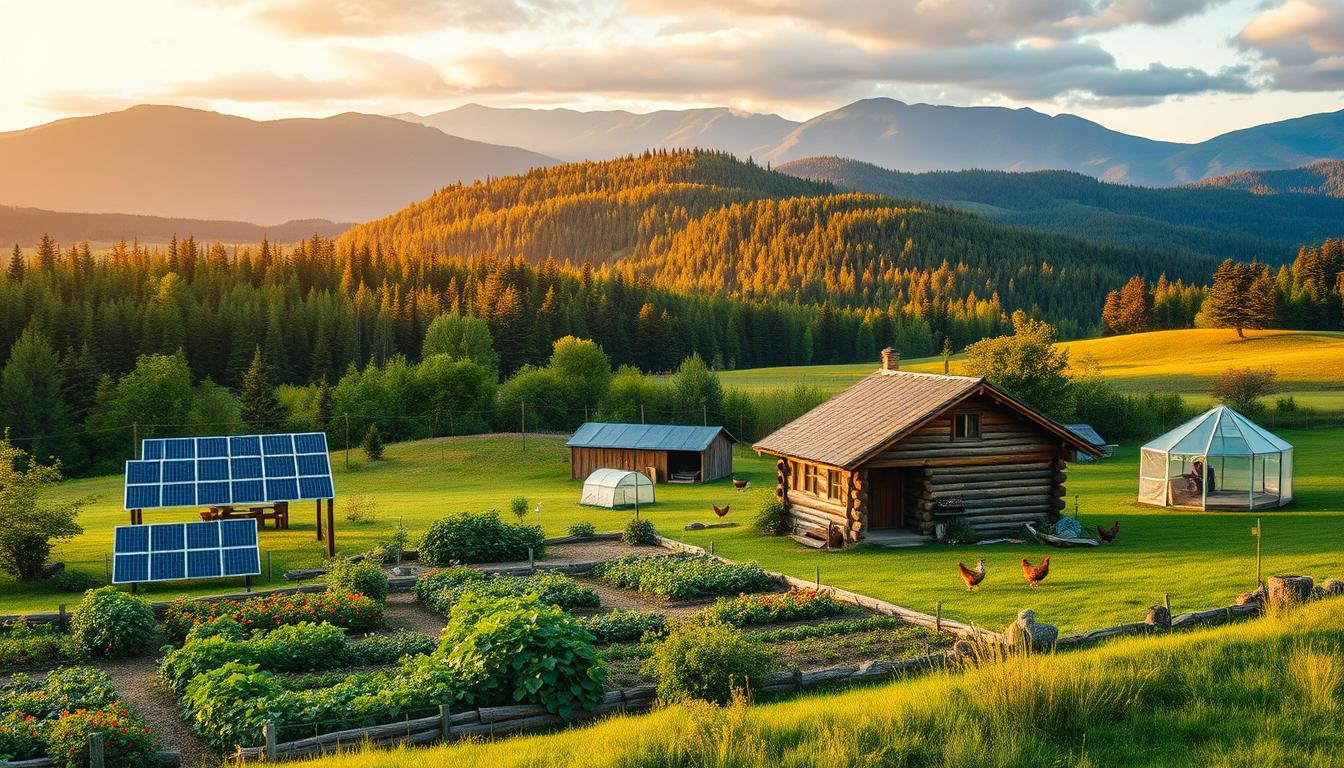Modern homesteading is more than just rural farming—it’s a mindset shift toward self-reliance. Whether you live in an apartment or on acres of land, this lifestyle is about taking small, meaningful steps to become more self-sufficient.
Starting small is key. For example, a balcony garden using a Greenstalk Vertical Planter can grow fresh herbs and veggies, even in limited spaces. Learning kitchen skills like meal planning and food preservation can also save money and reduce waste.
One inspiring story comes from a family who spent 18 years perfecting their homesteading journey. Through trial and error, they discovered the importance of adaptability—using every available space, from backyard gardens to community resources.
This guide will help you build foundational skills like budgeting, DIY projects, and connecting with your community. No matter where you start, homesteading is about creating a more intentional and fulfilling life.
Key Takeaways
- Modern homesteading is a mindset focused on self-reliance.
- Start small with container gardening or DIY projects.
- Adaptability is key—use balconies, backyards, or community spaces.
- Learn foundational skills like budgeting and food preservation.
- Connect with others to build a supportive community.
What is Basic Homesteading?
At its core, homesteading is about living intentionally and sustainably. It’s a way of life that focuses on reducing waste, growing your own food, and finding DIY solutions to everyday challenges. Whether you’re in a bustling city or a rural area, this lifestyle is accessible to everyone.
One common misconception is that homesteading requires vast acres of land. In reality, even a small urban space can be transformed into a productive area. For example, a herbal window garden can provide fresh herbs year-round, proving that you don’t need a traditional farm to embrace this lifestyle.
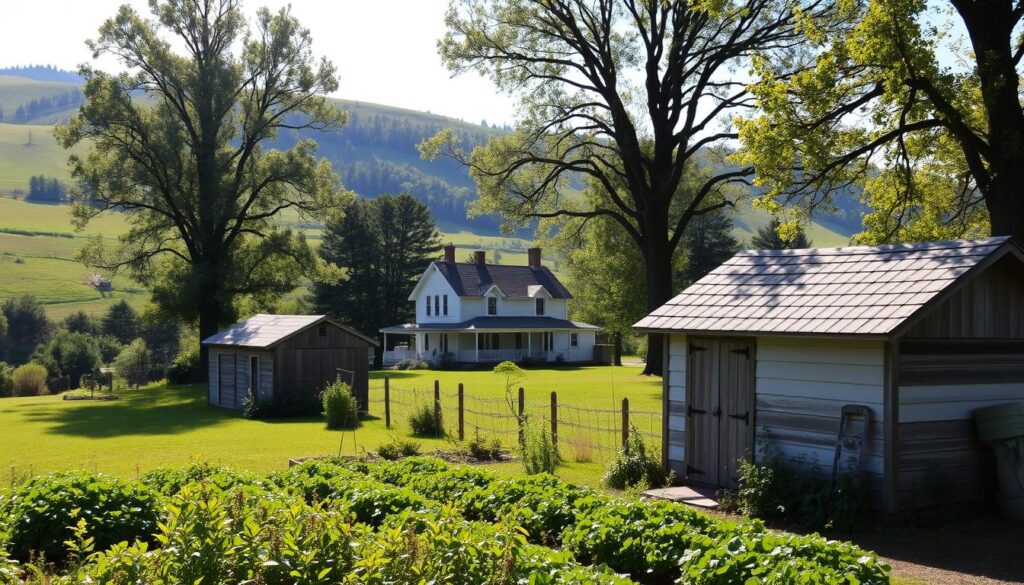
“Homesteading is a way of life, no matter where you live.”
This quote highlights the adaptability of homesteading, which is built on core principles like simplicity, independence, and resourcefulness.
People are drawn to homesteading for diverse reasons. Some aim for off-grid living, while others seek access to fresh, homegrown food. For many, it’s about achieving financial freedom and reducing reliance on external systems. Whatever your goal, homesteading offers a path to a more intentional and fulfilling life.
Essential Skills for Basic Homesteading
Building a self-sufficient lifestyle starts with mastering essential skills. Whether you’re growing your own food, raising animals, or preserving harvests, these abilities form the foundation of a self-reliant life. Let’s explore three key areas: gardening, raising chickens, and food preservation.

Gardening Basics
Gardening is a cornerstone of self-sufficiency. Start small with container gardens or raised beds. Focus on easy-to-grow crops like tomatoes, lettuce, and herbs. Proper soil preparation and consistent watering are crucial for success.
Raising Chickens
Chickens are a great addition to any self-sufficient setup. They provide fresh eggs and help with pest control. Ensure they have a secure coop, balanced feed, and access to clean water. Start with a small flock to learn the ropes.
Food Preservation
Preserving your harvest ensures a steady supply of food year-round. Try water-bath canning for jams and pickles. Dehydrate herbs or use your freezer for bulk produce. Fermenting vegetables with vinegar and salt is another simple method.
| Skill | Key Tips |
|---|---|
| Gardening | Start small, focus on easy crops, ensure proper soil and water. |
| Raising Chickens | Provide a secure coop, balanced feed, and clean water. |
| Food Preservation | Use canning, dehydrating, freezing, or fermenting methods. |
Planning Your Homesteading Journey
Embarking on a self-sufficient journey begins with thoughtful planning. Whether your goal is fresh food or off-grid living, a clear roadmap ensures success. Start by writing a “why” statement to define your purpose. This will guide your decisions and keep you motivated.
Next, sketch your property layout. Consider sun exposure and drainage for gardens or livestock areas. Research local zoning laws to understand permits for raising animals or setting up farmstands. Knowing your zone and regulations saves time and avoids legal hurdles.

Financial preparation is equally important. Audit your time and money investments to create a realistic budget. Prioritize debt repayment using methods like Dave Ramsey’s debt snowball. Clearing obligations frees up resources for your self-sufficient projects.
Here’s a quick guide to help you stay organized:
| Step | Action |
|---|---|
| Define Goals | Write a “why” statement to clarify your purpose. |
| Sketch Layout | Plan for sun exposure, drainage, and zoning laws. |
| Financial Prep | Audit investments and prioritize debt repayment. |
With careful planning, you can build a sustainable lifestyle that aligns with your goals. Take it step by step, and remember, preparation is the key to success.
Starting Small: Basic Homesteading for Beginners
Taking the first step toward self-sufficiency doesn’t require a massive overhaul. Begin with one simple project to build confidence and develop essential skills. Whether you have a small apartment or a backyard, there’s always a way to get started.
One easy project is creating a compost pile. Use a $10 bin to convert kitchen scraps into nutrient-rich soil. This step reduces waste and enriches your garden naturally. If you’re short on space, try growing herbs like basil or mint on a windowsill. These plants thrive indoors and add fresh flavor to meals or tea.
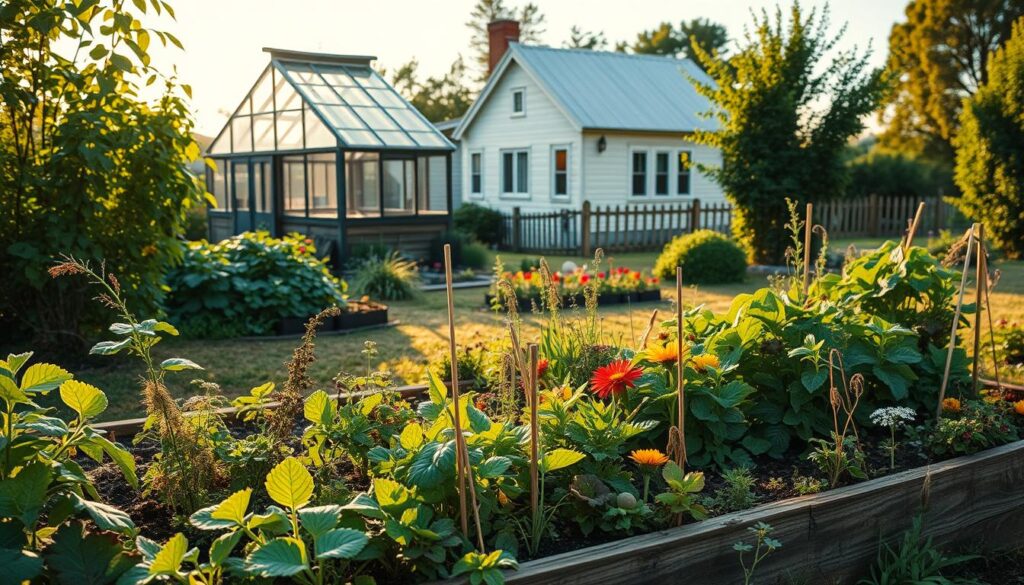
Repurposing old furniture is another creative way to begin. Turn an unused dresser into a raised garden bed or use pallets for vertical planters. These DIY projects maximize your available space and add a personal touch to your setup.
Joining a local co-op is a great way to get started with bulk buying. Purchase grains, produce, or other essentials at lower costs. This not only saves money but also connects you with like-minded individuals in your community.
- Convert kitchen scraps into compost using a $10 bin.
- Grow basil or mint indoors for cooking or tea.
- Repurpose old furniture into raised garden beds.
- Join a local co-op to buy bulk grains or produce.
For more tips on starting your journey, check out this guide on gardening for beginners. Remember, every small action brings you closer to a more self-reliant lifestyle.
Practical Homesteading Activities
Practical activities are the backbone of a self-sufficient lifestyle. These hands-on projects not only build skills but also reduce reliance on external systems. From composting to creating your own cleaning supplies, these tasks are simple yet impactful.
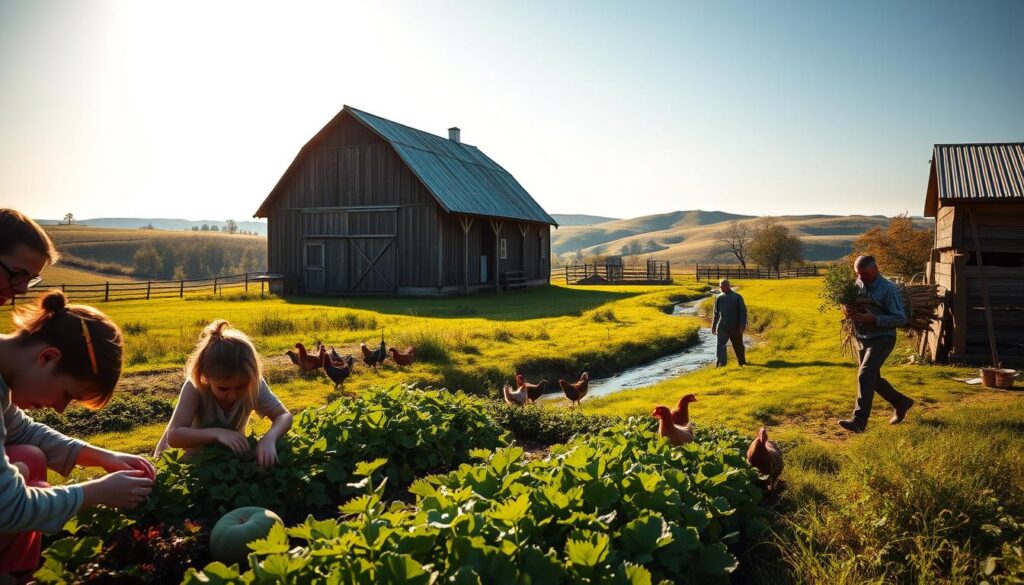
Composting
Composting is an easy way to turn kitchen scraps into nutrient-rich soil. Start with a small bin and add vegetable peels, coffee grounds, and eggshells. Avoid meat or dairy to prevent odors. Over time, this process reduces waste and enriches your garden naturally.
DIY Cleaning Supplies
Creating your own cleaning supplies is a cost-effective and eco-friendly choice. Mix vinegar, baking soda, and a few drops of essential oils for an all-purpose cleaner. This simple recipe eliminates toxins found in many store-bought products.
Here are a few easy recipes to try:
- Glass cleaner: Combine 1:1 vinegar and water, add a lemon peel for freshness.
- Dishwashing or floor cleaner: Use castile soap for a gentle yet effective solution.
- Storage tip: Keep homemade cleaners in labeled spray bottles for easy use.
These DIY solutions are not only budget-friendly but also safer for your home and the environment.
Budgeting for Your Homestead
Managing your finances wisely is a cornerstone of successful self-sufficiency. A solid budget helps you allocate resources effectively, ensuring your homestead thrives without unnecessary stress. Start by tracking expenses, such as comparing seed prices across suppliers. This simple step can save you money and stretch your budget further.

One creative way to offset costs is by selling extra produce or chicks. This not only brings in extra money but also reduces waste. Another strategy is bartering—trade eggs for a neighbor’s firewood or carpentry help. These exchanges build community while saving you cash.
Repurposing materials is another smart financial move. Turn pallets into chicken coops or use old containers for planters. These DIY projects minimize expenses and maximize resources. Prioritize investments by focusing on quality tools rather than decorative items. This approach ensures your budget is spent on essentials that support your self-sufficient lifestyle.
Finally, consider setting aside a portion of your income for savings. This safety net can cover unexpected expenses or help you tackle debt. With careful planning and smart choices, you can build a sustainable homestead without breaking the bank.
Building a Homesteading Community
Creating a strong network is essential for a thriving self-sufficient lifestyle. Connecting with others who share your goals can make the journey more rewarding and less overwhelming. A supportive community provides resources, knowledge, and encouragement.
One way to build connections is by hosting events like canning parties or skill-swap gatherings. These activities allow you to learn new techniques while fostering relationships. For example, you might teach someone how to preserve tomatoes, and in return, they could show you how to make soap.
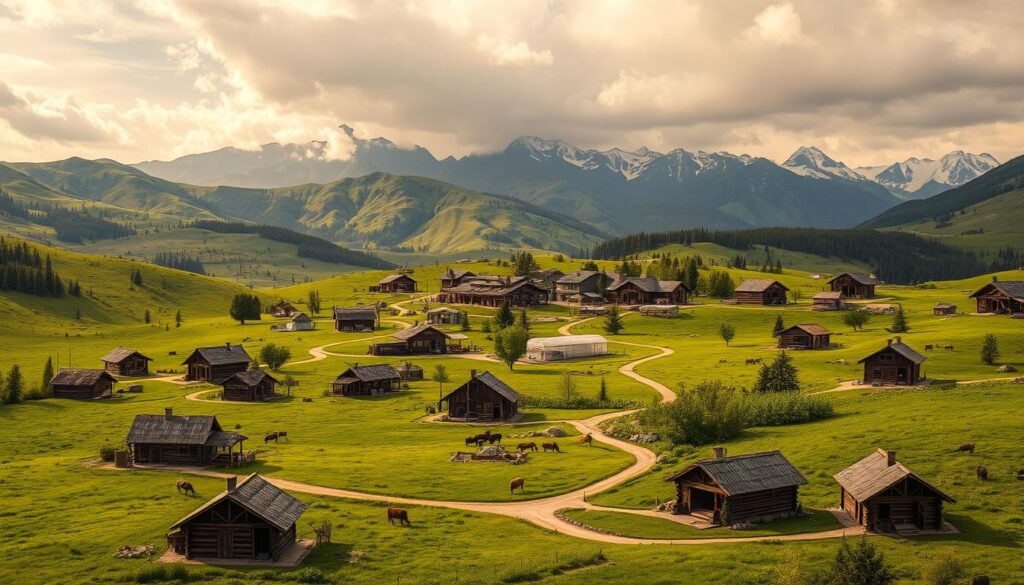
Joining local Facebook groups is another great way to connect. These platforms often organize seed or seedling swaps in the spring. Partnering with neighbors for bulk feed purchases can also save money and strengthen bonds.
Sharing tools is a practical way to reduce costs. Items like tillers or apple presses can be expensive, but pooling resources with others makes them more accessible. This approach not only saves money but also builds trust within your community.
- Host canning parties or skill-swap events to learn and teach.
- Join local Facebook groups for homesteaders to stay connected.
- Organize seed or seedling swaps in the spring.
- Partner with neighbors for bulk feed purchases.
- Share tools like tillers or apple presses to reduce costs.
By collaborating and sharing resources, you can create a network that supports your self-sufficient lifestyle. Building these relationships not only makes the journey easier but also more enjoyable.
Conclusion
Your self-sufficient journey is a personal path filled with growth and discovery. Start small, track your progress, and build a supportive community along the way. Mastering one skill at a time, like growing tomatoes, ensures steady progress without overwhelm.
Remember, failures are part of the process. They teach resilience and problem-solving, which are essential for any homesteader. Celebrate each step forward, no matter how small, as it brings you closer to your goals.
For ongoing education, consider joining the Homestead Kitchen Membership or HomeGrown Community. These resources offer affordable courses to deepen your skills and connect with like-minded individuals. Your journey is unique—embrace it with patience and determination.

